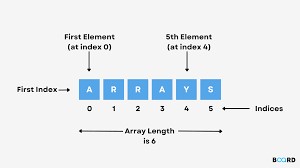Introduction To Arrays In Java
What Are Arrays In Java?
Arrays are a foundational data structure in Java, and in many other programming languages. An array is a fixed-size, sequential collection of elements of the same type. That is to say, an array can hold multiple values, as long as they are all of the same type – all integers, all doubles, all chars, etc.
Arrays in Java are objects, with the Array class being part of the java.lang package. They offer a means of storing and organizing data in a way that’s easy to access and manipulate. This makes them an invaluable tool in any Java developer’s toolkit.
Why Use Arrays In Java?
Imagine you are developing a program to store the grades of 30 students in a class. Without arrays, you would need to declare 30 different Java variables, each one holding the grade of a single student. However, with arrays, you only need to declare one array variable that can hold 30 grades. This not only makes your code cleaner and easier to manage but also allows you to manipulate the data in more sophisticated ways, such as sorting the grades or finding the average.
Declaring and Initializing Arrays
Declaring an array in Java involves specifying the type of the elements and the number of elements to be stored in the array.
Here is the general form to declare an array of Java:
type[] arrayName;The square brackets [] denote that this variable will be an array. The type indicates the type of elements that the array will hold.
Once an array is declared, it needs to be instantiated or initialized. This involves using the new keyword followed by the data type and the number of elements to be stored in the array.
Here’s how to instantiate an array:
arrayName = new type[length];And here’s how to declare and instantiate an array in one line:
type[] arrayName = new type[length];The length denotes the fixed size of the array – the number of elements it can hold.

Here’s an example:
int[] grades = new int[30]; // declares and instantiates an array to hold 30 integersWe can also initialize the array with specific values at the time of declaration:
In this case, the size of the array is inferred from the number of values provided in the curly braces {}.
Accessing Array Elements
Each element in an array is accessed by its index, which is its position in the array. Importantly, array indices in Java start with 0, not 1. So the first element of an array is at index 0, the second is at index 1, and so on.
Here’s how to access an array element:
arrayName[index];And here’s an example:
int firstGrade = grades[0]; // accesses the first gradeConclusion
Arrays are a versatile and vital part of programming in Java. They provide a simple and efficient way to store, access, and manipulate collections of data of the same type. The importance of understanding arrays can’t be overstated for anyone learning Java or any other programming language

